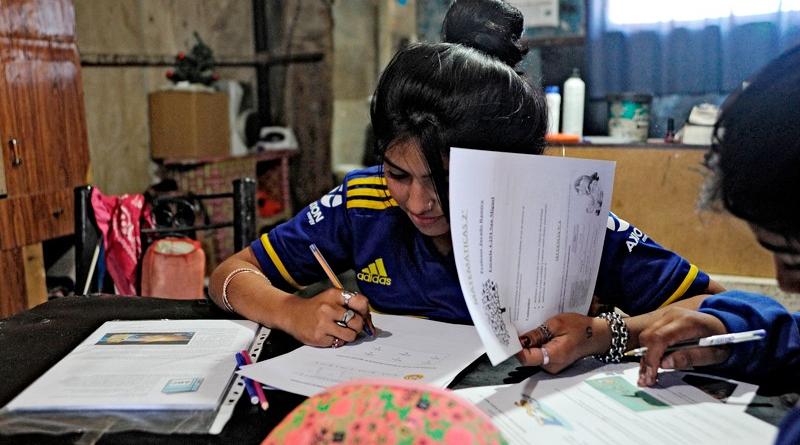Time to revise the Sustainable Development Goals.

The pandemic has set back efforts to achieve the original 2015 targets. The need for change to make them more attainable is stronger than ever.
The United Nations has confirmed an unwelcome suspicion: the coronavirus pandemic has put the Sustainable Development Goals (SDGs) out of reach. Most of the goals to end poverty, protect the environment and support well-being by 2030 were already off course. Now, what little progress had been made has been stopped in its tracks.
This week, as government representatives join a virtual UN meeting to decide how best to achieve the goals, it cannot be business as usual for the 2030 agenda. Researchers both outside and inside the UN are questioning whether the goals are fit for the post-pandemic age. The goals’ ambition is as important as ever, but fresh thinking is needed on the best ways to achieve them.
Of the 17 SDGs, just 2 — eliminating preventable deaths among newborns and under-fives, and getting children into primary schools — were close to being achieved pre-pandemic. But COVID-19 has turned back the clock. The UN’s 2020 report on the SDGs reveals that childhood vaccination programmes have stalled in 70 countries, and that school closures have kept 90% of the world’s students — some 1.57 billion children — out of school.
The rise in domestic abuse brought about by lockdown measures has put paid to progress in the goal for gender equality and women’s empowerment. Many women have been unable to access sexual- and reproductive-health services, which could result in as many as 2.7 million extra unsafe abortions being carried out, according to Clare Wenham, a health-policy researcher at the London School of Economics, and her colleagues (C. Wenham et al. Nature 583, 194–198; 2020).
At the same time, at least 270 million people face hunger, and the World Food Programme is preparing its biggest humanitarian response in history. More than 70 million people will be forced into extreme poverty this year — potentially wiping out recent gains. That’s in addition to the more than 750 million who were already living on less than US$1.90 a day.
All in all, the goals to eliminate poverty, hunger and inequality, and to promote health, well-being and economic growth are headed for extinction. In many instances, countries will be unable to even record what is happening: according to a survey of 122 national statistics offices by the UN and the World Bank, 96% of such offices have fully or partially stopped face-to-face data collection.
What, then, needs to be done? Even before the pandemic, ideas were being floated to find ways to make the goals more achievable. Under one proposal from a group of UN science advisers, the 17 SDGs and 169 associated targets would be redistributed into 6 “entry points”. These would be human well-being (which would include eliminating poverty and improving health and education); sustainable economies; access to food and nutrition; access to, and decarbonization of, energy; urban development; and the global environmental commons (combining biodiversity and climate change).
A related proposal, but from a different group of advisers, the Sustainable Development Solutions Network (SDSN), also redistributes the 17 goals into 6, which it calls “transformations”. These are: education, gender and inequality; health, well-being and demography; energy decarbonization and sustainable industry; sustainable food, land, water and oceans; sustainable cities and communities; and digital revolution for sustainable development.
In both cases, however, countries would still be required to meet the actual SDGs — and their targets. Guido Schmidt-Traub, the SDSN’s executive director, told Nature the SDGs should still guide post-COVID-19 recovery. “There is nothing else to replace the SDGs right now.”
But such a measure is no longer realistic, according to Robin Naidoo, a lead scientist at the conservation group WWF-US in Washington DC, and Brendan Fisher, an environmental scientist at the University of Vermont in Burlington. Last week, they described how COVID-19 has irreparably altered at least some of the SDGs’ underpinning assumptions (R. Naidoo and B. Fisher Nature 583, 198–201; 2020).
When the goals were set, in 2015, the picture was one of rising economic growth and positive international cooperation — which led to the Paris climate agreement — both essential to meeting many of the SDGs’ targets. Now that the world is reeling from coronavirus and is on the brink of a once-in-a-century depression, governments are cooperating much less; crucial international meetings on protecting the climate, biodiversity and wetlands have been postponed; and aid to help the poorest countries meet their goals is set to fall.
Separate goals from growth
A more radical overhaul of the SDGs is also being advocated from inside the UN. In an excoriating report, Philip Alston, until recently the organization’s special rapporteur on extreme poverty and human rights, urged the SDGs’ supporters to acknowledge that things have changed. “The official response to date has been that ‘the 2030 Agenda must be preserved, and the SDGs must be reached’,” he wrote. “But doubling down on an inadequate and increasingly out-of-date approach is especially problematic.” He’s right.
One priority — as Alston, Naidoo and Fisher, among many others, advocate — is to decouple the SDGs from economic-growth targets. It is not just that growth is unachievable — at least for the foreseeable future — but that there is evidence to show that its benefits have not been equitably shared, and that it assigns value to undesirable things — what Naidoo and Fisher call “dangerous jobs, traffic jams and pollution”. Because of the way growth is measured, an increase in any of these three translates to positive growth figures. This creates perverse incentives for policymakers to put cars on the roads or invest further in fossil fuels.
Yet without growth, where will funding be found to achieve the many transformations needed? Naidoo and Fisher respond by pointing to one eye-watering figure: in 2015, government subsidies to the fossil-fuel industry came to $4.7 trillion, a figure that probably now exceeds $5 trillion. Each year, citizens are paying the equivalent of the gross domestic product of Japan to prop up an industry that is among the principal causes of climate change and unsustainable development. This money should be spent on achieving the goals, not undermining them.
Recalibrating the SDGs — especially in the current climate — won’t be easy. But the evidence that there is a need for a changed approach is accumulating. If the pandemic has shown us anything, it’s that countries can drastically change the way they think and act. The pandemic is radically altering economic and social realities. It shows that radical action can be taken to tackle poverty and inequality, health, education, biodiversity and climate.
When country representatives and the UN’s science-advice teams wrap up their meeting this week, they must heed their own poverty adviser and “avoid sleepwalking towards assured failure, while pumping out endless bland reports”.
Nature 583, 331-332 (2020)
doi: 10.1038/d41586-020-02002-3
14 July 2020
nature




